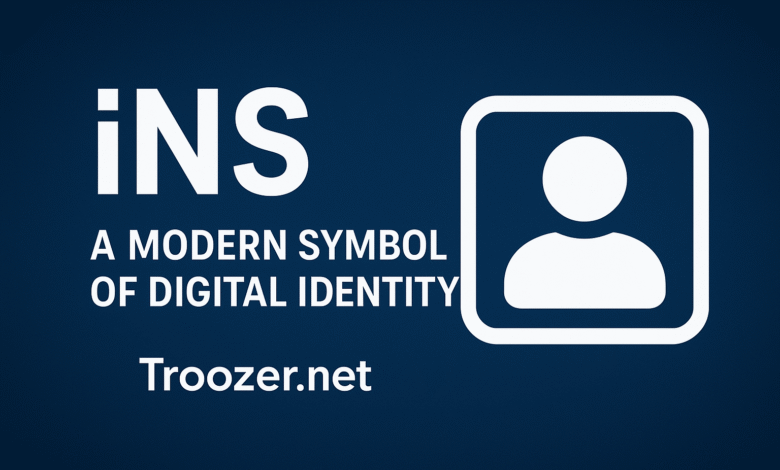i̇ns: A Modern Symbol of Digital Identity

In an era where our lives are increasingly intertwined with the digital realm, identity has evolved beyond physical documents and in-person interactions. Today, who we are online matters just as much — if not more — than who we are offline. Within this transformation, İNS (short for Internet Name System or simply İns) has emerged as a modern symbol of digital identity, redefining how individuals and organizations represent themselves in the web’s expanding universe.
The Evolution of Digital Identity
Digital identity once revolved around usernames, email addresses, and social media handles. Each platform held its own identity silo — a fragmented version of you that existed within the confines of a single ecosystem. But as online activities diversified — from gaming and content creation to blockchain transactions and digital art — the need for a unified, verifiable identity grew stronger.
Enter İns. The concept of İns represents the next generation of identification on the internet — a single, secure, and recognizable name that connects a person or brand across multiple digital platforms and services. It’s not merely a name or tag; it’s a digital passport, blending personal expression, technological trust, and ownership.
What Is İNS?
The term İNS can be understood as a decentralized identity framework that enables users to register and own unique identifiers — often linked to blockchain technology. Much like domain names in the early days of the internet, İns identifiers act as an address for digital presence. However, instead of pointing to a website, an İns identity points to an individual’s entire digital persona, including wallets, social media profiles, professional portfolios, and even credentials.
For example, if someone owns the İns name “alex.ins”, that identifier can be tied to their cryptocurrency wallet, NFT portfolio, decentralized social account, and professional web presence — all under one unified banner. In this sense, İns bridges the gap between Web2 (the traditional internet) and Web3 (the decentralized web), giving users more control over their online footprint.
The Symbolism of İNS
Beyond the technology, İns carries symbolic weight. It represents self-sovereignty in a digital world dominated by centralized platforms. Traditional identity systems — like email providers, social networks, or government databases — rely on third-party control. Your username or account can be suspended, your data sold, or your presence erased at the discretion of a company. İns flips that paradigm by placing ownership directly into the user’s hands.
Owning an İns identity is like planting your personal flag on the digital frontier. It signifies authenticity, ownership, and independence. It’s your digital signature — immutable, portable, and uniquely yours.
How İNS Reinvents Online Trust
Trust is one of the biggest challenges online. With fake accounts, bots, and scams flooding social platforms, proving authenticity has become a daily struggle. İns addresses this issue by enabling verifiable identity ownership. Because İns identities are typically backed by blockchain technology, they are:
-
Transparent: Anyone can verify the legitimacy of an İns identifier.
-
Secure: The cryptographic foundation prevents tampering or impersonation.
-
Portable: Users can carry their digital identity across applications without creating new logins or profiles.
This portability and verifiability make İns not just a name — but a trust layer for the modern web. Imagine logging into a platform, sending money, or signing a digital contract, and all of it being verified instantly by your İns identity. The result is a safer, smoother, and more human-centered internet experience.
İNS and the Web3 Movement
The rise of Web3 — a decentralized, user-owned version of the internet — has accelerated the relevance of İns. Within blockchain ecosystems, İns functions similarly to how domain names work for websites, except it replaces complicated crypto addresses (like “0x6f…9aE”) with readable and memorable identifiers (like “sara.ins”). This not only enhances usability but also improves transparency and branding in the digital economy.
Furthermore, artists, entrepreneurs, and creators are adopting İns names as a mark of legitimacy in the NFT and metaverse worlds. Owning your İns name allows you to link all your assets, creations, and achievements under one verifiable identity. It becomes your digital resume — your evolving personal brand.
The Future of İNS and Digital Identity
The potential of İns extends far beyond blockchain. As artificial intelligence, augmented reality, and digital governance expand, the need for interoperable identity systems will grow. İns could become a foundational layer in how we authenticate ourselves in digital societies — from logging into virtual spaces to signing decentralized contracts or proving ownership of digital assets.
In the future, your İns identity might be used to:
-
Verify your digital citizenship in online communities.
-
Authenticate access to digital workplaces or virtual events.
-
Manage and protect personal data through encrypted self-control.
-
Serve as a secure gateway to digital economies, including AI-driven services.
In essence, İns has the potential to be the anchor of digital authenticity — ensuring that as technology evolves, identity remains human-centered, personal, and secure.
Read More: Slylar Box: The Future of Smart Storage and Home Security
Conclusion
İns is more than a technological innovation; it’s a cultural shift. It redefines what it means to “be someone” online — moving from scattered usernames and data profiles toward a unified, user-owned, verifiable digital identity. Whether through blockchain, Web3, or emerging AI systems, İns symbolizes the freedom to define, own, and protect who you are in the digital world.
As we step deeper into a future where digital presence equals personal presence, İns stands as the modern emblem of authenticity — the true name we choose to represent ourselves in the interconnected universe of tomorrow.



